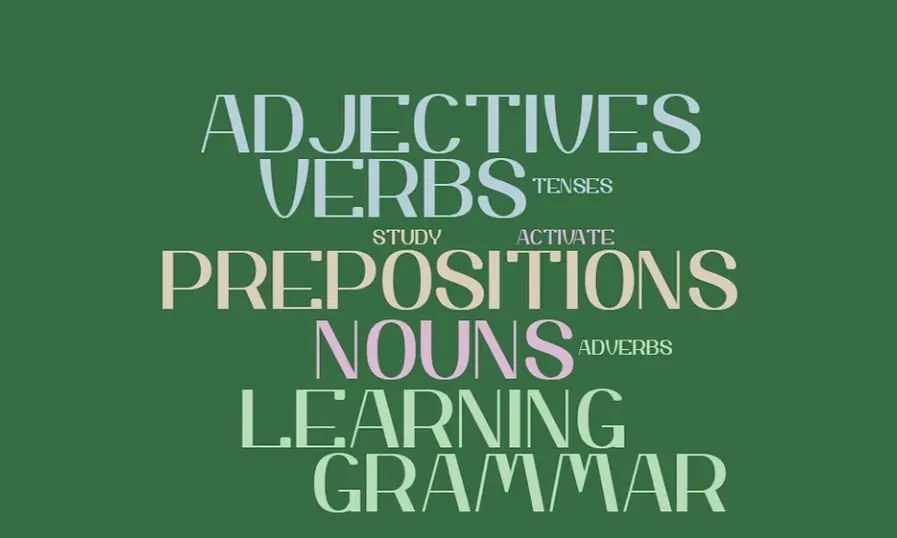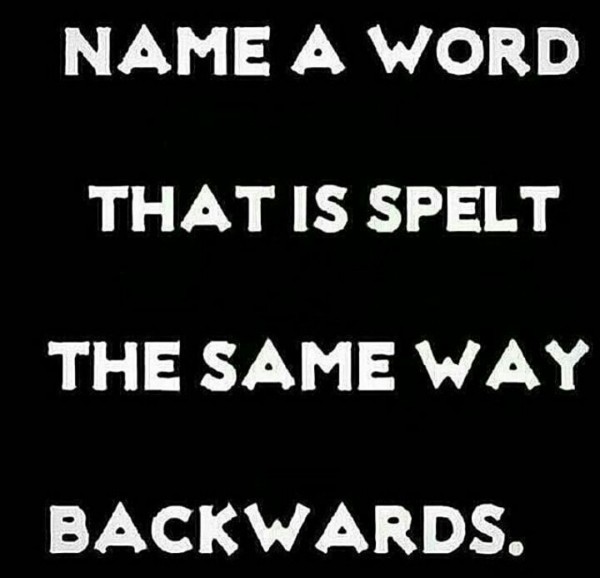
The purpose of this post is to teach outstanding features of the English language structure. This background to the study of English language is very essential and should not be neglected. It provides a broad information for students so as to enable them understand and place in a wider context, the more detailed information on parts of speech.
In order to make clear, the general rules about the construction of sentences, it is necessary to study the smaller units first.
1.1 Units of English Language
English language is made up of 5 units. These unites are;
- The morpheme
- The words
- The phrase
- The clause and
- The sentence
1. The Morpheme
This is the smallest and the simplest meaningful unit. It is a meaningful word or part of a word which contains no smaller meaningful parts. For Example, the word ‘gun’ is a morpheme while the plural form, ‘guns’ contains two morphemes. Gun-fight-er contains three morphemes while play-er contains two morphemes.
2. The Word
A word contains two or more sounds which can be spoken to represent an idea, object or action. It contains one or more morphemes, Example are: cups tables, chair, radio, box etc.
3. The Phrase
This is a small group of words forming parts of a sentence without a finite verb. Examples are a pack of cards, walking along the road, a small boy etc, You can learn more about clauses and Phrases to gain deeper insight on what it is all about.
4. The Clause
A clause is a group of words forming part of a sentence containing a subject and finite verb. It often does the work of a noun, adjective or adverb. Example are: that book was stolen, who is the chairman of the club, which is at the corner of the room etc. This is also taught properly in one of my article on clauses and phrases, kindly refer to the link to gain more insights.
5. The Sentence
The sentence is a group of words that forms a statement, command, exclamation or question. It contains a subject and a verb and it is writing, s sentence begins with a capital letter and ends with one of the punctuation marks like a full stop, an exclamation mark or a question mark. A sentence may contain one or more clauses or phrases.
1.2 Sentence Elements
A sentence comprises of five units called elements of sentence. These elements constitute the sentence structure. They are the Subject, Verb, Complement, Object and Adverbial. These elements are represented and abbreviated as SVCOA. The compulsory elements that must always be present in any sentence before it can be regarded as complete and correct are: the subject and the verb; Other elements are optional hence; they are always put in bracket to indicate this fact. Thus the sentence structure can be represented as: SV(COA).
Examples are:
- Jesus wept (SV).
- The girl is a good student (SVC).
- The small girl grew happier everyday (SVCA).
- Kunle gave the girl an orange (SVOO)
- They made him the chairman every year (SVCOA).
In English language, there is a primary distinction between the subject and the predicate. The subject of a sentence is who or what is being discussed in the sentence. For example, the subject is normally a noun or a noun phrase or even a clause with a nominal function. It occurs before the verb or the verb phrase in declarative clauses and in questions immediately after the operator. The subject usually has a number and person concord or agreement with the verb. The predicate always says something about the subject of the sentence and the predication starts with the verb to include all other elements in the sentence.
Examples are:
Subject | Predicate |
| Jesus | wept |
| The girl | is a good student |
| The small girl | grew happier everyday |
| Kunle | gave the girl an orange |
| They | made him chairman every year |
Objects and Complements
Object: Object is who or What is concerned in the results of an action (indirect object of a verb) or to whom or to what something has been done (direct object of a verb).
There are two types of object. These are:
(1) Direct Object (Od) and
(2) Indirect Object (Oi)
Example: The boy gave the principal a book.
In this sentence. the verb gave has two objects: (a) the principal. and (b) a book. The first of these is called an indirect object, because it really means that the action is to the principal. The direct object is by far the more frequent kind of object and with some exceptions. It must always be present if there is an indirect object in a sentence. Indirect object almost always precedes the direct object and it is characteristically a noun or a noun phrase or even a cause with nominal function like the subject. The object normally occurs after the subject and the verb phrase.
Examples are:
- The boy (s) had given (v) the girl (Oi) an orange (Od).
- They (s) gave (v) the boy (Oi) a toy car (Od)
However. it is possible to have only one object in a sentence. In this case such object is the direct object.
E.g. They (s) have stolen (v) my new book (Od).
In the sentence above. ‘my new book’ is the object of the verb have stolen
2. Complements: They always have a straightforward relation to subject or the object in sentences,
These are;
1) Subject complements and
2) object complement
Loosely speaking, the subject complement is used in sentences to make a statement on the subject of the sentence.
e.g The girl(s) is (v) a brilliant student (Cs)
In the above sentence. the subject ‘the girl’ is understood as being a brilliant student. Other examples are:
1) Olu (s) is (v) a stupid boy (Cs).
2) The man (s) is (v) the chairman of the company (Cs)
3) Nike’s mother (s) is (v) a good cook (S)
4) The small boy (s) grew (v) happier (s)
5) Aregbesola (s) is (v) a warm-hearted man (Cs)
The object complement can be explained as having a Similar relation to direct object which it mostly follows as the subject complement does to a Subject. The object complement can also be said-to-be-used in sentences to
make a statement on the object of a sentence.
e.g. The principal (s) makes (v) the boy (o) the senior prefect (o)
In the above sentence, the object the boy is understood as being the senior prefect. Other examples are:
- The wicked man (s) called (v) his wife (o) a rogue (Co).
The people(s) elected (v) the man (o) president (o)
The class (s) chose (v) Kunle (O) its leader (Co).
A complement, whether subject or object complement, is usually a noun phrase., an adjectival phrase or a clause with nominal function and having a co-referential relation with the subject or the object as explained above.
With the above explanation, attempt the exercise below.
State the structure of the following sentences.
- I put the cup on the table.
- The students have proved the teacher wrong.
- Funke gives me expensive presents.
- Olu made Nike a good wife.
- John made his career a success.
- Tunde is teaching the boys English language.
- Mary is in the house.
- Omoladun is a Kind nurse.
- Kemi has broken the glass.
- The teacher made Funmi a scape goat.
1.3 TYPES OF SENTENCES
Basically there are four types of sentences. They are;
- Simple sentences
- Compound
- Complex and
- Compound-complex sentences.
1. Simple Sentence
The simple sentence is an independent clause or the main clause that expresses only one thought. It usually has only one verb and it conveys only one idea.
Examples are:
- The woman walked into the sitting room.
- She found Olu sitting on a chair.
- Nike went to the market.
- She bought a lot of goods.
2. Compound Sentence
A Compound sentence is formed when two or more independent clauses are joined together by using co-coordinating conjunctions like and, or, nor and but. For example, the simple sentences above can be joined together in pairs as follows:
- The woman walked into the sitting room and found Olu sitting on a chair
- Nike went to the market and bought a lot of goods.
3. Complex Sentence
Complex sentence is a sentence with one independent or main Clause and one or more dependent or subordinate clauses. An independent clause is a clause which can stands on its own in terms of meaning. While a dependent or subordinate clause. as the name implies. cannot stand on its own in terms of meaning but has to depend on the main clause for its meaning. The dependent clause is a complex sentence usually introduced by a subordinating conjunction.
E.g. This is the boy who was caught stealing oranges.
In the above sentence, the main clause or independent clause is ‘This is the boy’ while who was caught stealing oranges is the dependent or subordinate clause. It depend on the main clause who can stand on its own for its meaning.
Other examples are;
- The teacher flogged him (main or independent clause) because he jumped the fence (subordinate or dependent clause).
- This is the girl (main or independent clause) who danced very well at the party (subordinate or dependent clause).
4. Compound-complex Sentence
A compound sentence is one with at least two independent clauses and at least one dependent clause.
Example of compound complex sentences are;
- Your creditor came yesterday when you were not at home but I was able to pay him.
- The speakers came into the hall when the light was off but they were able to address the students.
Below are exercises you can test yourself on the types of sentences listed above and break them down into main and dependent clauses;
- Although the manager came late. he was in the factory before most the workers.
- My friend visited me yesterday and we played chess.
- The woman who sent you to call me is my mother
- The game ended abruptly when the thugs invaded the field but our players escaped unhurt.
- We ate our food which was kept on the dining-table for us but we were not satisfied.
- We all ran for our dear lives when the lion in the zoo roared.
- Ada bought a new pair of shoes but it was undersized.
- The boy who is working in the library is my intimate friend.
- The students stood up when the bell sounded and everybody began to sing the national anthem.
- Kunle was in the classroom but the teacher could not see him.
This is all i can take you through for now on grammatical structure broken down into units of English Language, sentence elements as well as cited examples that better illustrate the subject matter. Please feel free to send your questions via the comment section below and I will respond in no time.
Please LIKE and SHARE this post via your social media platforms so others could benefit from this wonderful lesson.




